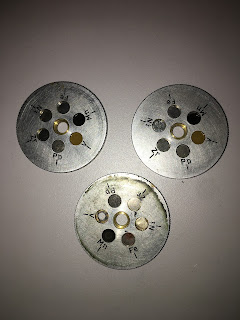Quantum Dot Testing
Why Test Quantum Dots?
Quantum dots have demonstrated extensive potential in biomedical applications due to the combination of their unique photophysical properties, and the ability to render them biocompatible and specific by conjugation to various biomolecules. Their use is underway in various immunological and molecular assays for different pathogens and biomarkers. For the clinical laboratory, quantum dots are used as tools for ultrasensitive multiplexed diagnostics. Additionally, the combined utilization of quantum dots with their unique optical properties and microfluidics would aid the development of sensitive bioanalysis systems, and aid in the efforts towards their use for point-of-care testing, which would allow the movement of testing processes closer to patients in remote locations with limited infrastructure and decrease reliance on central laboratories. Also, point-of-care testing would support field testing in disease outbreak areas. Commercial availability of various types of quantum dots is substantially increasing and a large body of successful studies of clinical utility has already built up. These factors are highly conducive and indicative of a more significant role of quantum dots in the future of bioanalysis. The next decade in the world of medicine, biology, and physics we can expect to see a noticeable advancement in the use of quantum dots.
For our first data collection we found the following values:
560 nm
The Wavelengths ranged between 380nm-900nm
The Absorbance hovered around 3 until it hit 530nm, then it decreased to almost zero until 600nm, and then it increased back up to 3
*Working on getting a picture of the spectrum to place here*
(Here we will insert more data on our quantum dots when we conduct more experiments)
Below are pictures and descriptions of how we conducted our experiment.
Above is a picture of our set up with the lights on to see how our experiment was actually conducted. Here we can see one of our Quantum Dot samples placed on a lit UV LED Flashlight. We then held up a fiber optic cable near the quantum dots and placed the other end into the SpectroVis Plus. The SpectroVis Plus was then plugged into a laptop where we could see the spectrum produced there. When we were ready to conduct an experiment we would turn the lights off, lower the brightness of the laptop we were using and only turn on the UV LED Flashlight. This would reduce as much light interfering with our quantum dots as possible and only have our sample exposed to UV light.
Above is what it looked light when we turned off all the lights. As we can see, we did a great job at reducing the most amount of light as possible when conducting the experiment. Once the lights were off we were able to turn on the UV Flashlight, hold the fiber optic cable up to the quantum dots, turn on the spectrometer, and click run on the laptop to run the sample. Data collections usually took less than a minute to collect all the necessary data needed for each sample.
Above is one of our Quantum Dot samples placed onto a UV LED Flashlight. This is how we exposed light to our quantum dot samples and collected data.
Above is a picture of the portable UV-Vis Spectrometer we used titled SpectroVis Plus. This was a great way to start our spectrometer research and familiarize ourselves with how to collect data from a spectrometer. We wanted to use this instrument before using the larger Agilent Cary 100 Ultraviolet-Visible (UV-Vis) Spectrometer in the SAInT Center. Using it is simple in the sense that you just need to place your sample either in a test tube or cuvette and place it in the square slot on the top of the spectrometer. In the picture above we were studying an already prepared sample given to us by the chemistry department and tried running a sample and collecting data.
Above is a picture of a Vernier LabQuest Device that we used to look at the spectrum our samples produce. We can plug this instrument into the SpectroVis Plus and collect data that way.
Above is a picture of one of our research students Cham. Here he is working with a portable UV-Vis Spectrometer plugged into a LabQuest. We ran some samples through this to familiarize ourselves with the data collecting process, and how to use a UV-Vis.























































